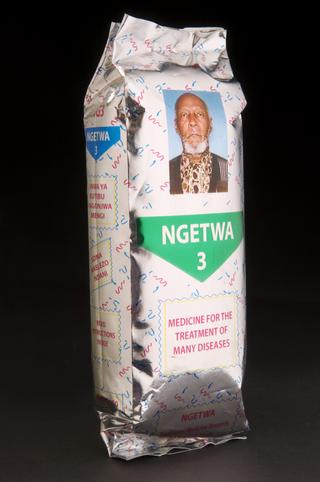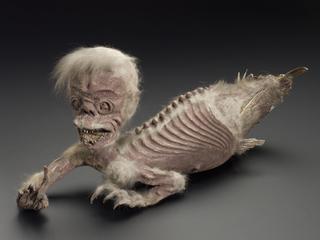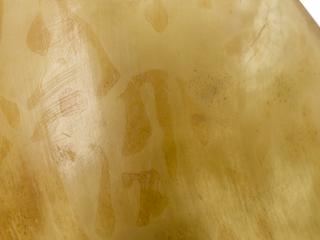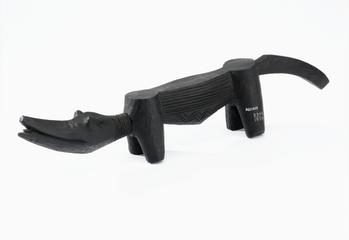
Astragalus (ankle) bone carried against rheumatism, Suffolk, 1880-1916
The growing influence of biomedicine in the 1800s did not necessarily replace established forms of treatment based on belief and superstition. What could be referred to as folk medicine – customs that often went back generations – continued to be practised. For example, carrying around a piece of ankle bone was believed to be a cure for rheumatism (aches and pains in the joints), transferring the pain from the person to the stone.
The piece of flint was a gift in 1916 from Edward Lovett (1852-1933), a collector of British amulets and charms. It is pictured here with two other bones used as a ‘cure’ for aching joints, (A79937 and A79960).
Details
- Category:
- Ethnography and Folk Medicine
- Collection:
- Sir Henry Wellcome's Museum Collection
- Object Number:
- A665266
- Materials:
- bone, astragalus
- Measurements:
-
overall: 21 mm x 34 mm x 21 mm, .01kg
- type:
- human remains and bone
- credit:
- Wellcome Trust




